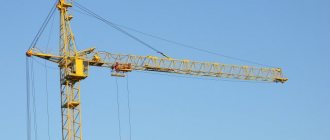We often receive questions from buyers of new buildings: How to check an apartment in a new building before purchasing (when purchasing)?
How to check the developer when purchasing a new building? In this article we will answer these questions and talk about how to navigate the sea of offers on the market for housing under construction, choose an apartment and minimize the risks of purchasing housing under construction. Checking an apartment in a new building before purchasing should include 3 stages:
- checking the developer
- inspection of a property under construction
- checking the legal “purity” of the proposed purchase scheme, the terms of the contract and the seller’s authority to alienate the apartment
We will describe each stage of verification below.
Checking the developer when buying an apartment in a new building: step-by-step instructions
So, let’s decide what you need to pay attention to when choosing a developer, that is, the person directly responsible for the construction of a new building.
You can check the developer yourself, using public information. This check will allow you to form a general impression of the integrity of the developer, his stability and diligence. However, engaging a lawyer for the so-called legal audit of the developer will significantly save your time and allow you to obtain more complete information about the developer.
A classic developer check includes the following steps:
Step
1. Checking general information about a legal entity
For independent verification, you need to obtain an extract from the Unified State Register of Legal Entities. This can be done for free at, if you know the INN or OGRN of the company.
The Unified State Register of Legal Entities contains information about the company, such as information about the director, founders, the size of the authorized capital, information about issued licenses, the location of the company, etc.
There you can also see information that the company is in the process of liquidation, reorganization, or there is any information about the unreliability of the data provided by the company.
All data from the Unified State Register of Legal Entities should be assessed as a whole. For example, if the authorized capital of a developer is 10,000 rubles, the director is a “mass director” (director of a large number of companies), and the address is unreliable, then you should think about whether it is necessary to cooperate with such an unreliable counterparty.
At the same time, the information specified in the extract is catastrophically insufficient to make a final decision on the reliability of the developer, and therefore it is necessary to move on to the next stage.
Step
2. Assessing the developer’s previous projects
In order to have an idea of whether the previously selected developer was engaged in the construction of serious projects, whether he delivered the projects on time, etc. It is advisable to evaluate the official website of the developer, articles in the media, and specialized forums. It is worth treating the information received with a certain degree of skepticism, but it is still possible to form some general idea about the developer.
In addition, it must be remembered that the presence of commissioned real estate objects and the previous “merits” of the developer do not clearly indicate its current financial stability. It is worth remembering bankrupt developers with a long history (for example, group of companies SU No. 155, Urban Group). Therefore, all of the above factors and information must be assessed in their totality and interrelation.
Step
3. Assessing the financial stability of the developer
Data from financial statements for recent years are published on. Publication occurs with a delay of approximately 7 months after the end of the reporting year.
The lack of reporting to Rosstat may indicate the developer’s dishonesty, since in this case, most likely, the reporting is simply not submitted, and the company is preparing to close.
A participant in shared construction has the right to request accounting data with a mark of submission to the tax authority from the developer himself, since this information does not constitute a commercial secret. Moreover, the law establishes the obligation of the developer to provide each applicant with financial statements for the last three years of activity and a conclusion on the results of the audit of the developer in accordance with Law No. 214-FZ for the last year.
- What indicators in accounting should the shareholder pay attention to?
- net profit (loss) for the reporting period and the previous year (look at the dynamics of changes; a loss or sharp/sustained negative dynamics should alert you);
- revenue, receipts for the reporting period (these indicators will allow us to judge the economic activity of the company);
- the amount of net assets (what creditors can count on in the most unfavorable outcome of the company’s activities);
- the amount of fixed assets and inventories of the developer, other assets (property of the developer);
- the amount of receivables (the amount of debt that the developer can collect from its counterparties);
- the amount of short-term and long-term obligations of the developer.
Here you can obtain information about loans received by the company. On the one hand, it’s good if banks lend to the developer:
— firstly, credit institutions assess the solvency of the developer before issuing loans.
— secondly, the developer will have funds for the construction of the facility.
On the other hand, a significant number of loans, lack of own funds, and revenue for several years may indicate possible risks of lack of money to repay the loan in the future, and, accordingly, potential bankruptcy.
Step
4. Checking the developer's judicial activity
To find information about legal disputes involving the developer in arbitration courts and courts of general jurisdiction, you can use the automated systems of the relevant courts.
So, in order to look at the court cases of a construction company and the decisions of arbitration courts made on them (considering economic disputes, for example, claims against the developer of suppliers of goods, contractors, etc., bankruptcy disputes), you need to contact - enter the developer’s data (TIN, name, etc.).
It is necessary to analyze not only the number of arbitration cases, but also check the dates of their consideration, read court decisions to assess the essence of the dispute and the amounts recovered (the claims of the plaintiffs may be partially satisfied or the claims may be rejected by the court; in addition, from the court decision one can conclude that the presence or absence of good reasons for the developer to not pay the debt - for example, the presence of counter-claims for quality, etc.).
Pay attention to corporate disputes in arbitration court between the founders, to disputes about the collection of money from the developer by the bank, and especially to bankruptcy cases.
Litigation involving a developer in courts of general jurisdiction is more difficult to find, since the database is still unstable, many acts are not in the database, and the search can take quite a long time.
In this regard, it is also necessary to check court cases involving the developer in a court of general jurisdiction at the place of its location and at the location of the new building (to determine territorial jurisdiction, you must indicate the current address of the developer from an extract from the Unified State Register of Legal Entities or the address of the new building on the website of the judicial department of your region) . Usually the courts serve certain areas and have corresponding names (for example, the legal address of the developer is in the Leninsky district, which means the dispute will be subject to the jurisdiction of the Leninsky District Court). For Moscow, you can determine the authorized court on the website. On the same site it is possible to find a case in any court in Moscow by the name of the party to the dispute (the developer in our case).
However, such a check will still not allow assessing the entire volume of claims, since shareholders also have the right to apply to the courts of general jurisdiction at their place of residence (for example, for claims for termination of the DDU, collection of late fees, quality of construction, etc.).
It is worth noting that the mere presence of claims by equity holders against the developer for the collection of penalties for late delivery of apartments or for termination of the tenancy agreement is not an unconditional indicator of its insolvency. However, the presence of such claims will inform you that the developer is delivering the objects behind schedule and will allow you to take this into account when planning your expenses.
Step
5. Searching for information about the possible bankruptcy of the developer
In the above File of Arbitration Cases, the shareholder can see whether applications have been filed to declare the developer bankrupt. If there are such statements, and even more so if there are many of them, this may indicate a risk of insolvency.
But it must be remembered that the filing and acceptance by the court of an application for bankruptcy does not yet indicate that this application will be recognized as justified.
It is also worth familiarizing yourself with statements of intention to apply to the court for bankruptcy, which are published on, as well as messages about bankruptcy procedures in.
Step
6. Search for enforcement proceedings against the developer
Information about the developer’s debt, which is aimed at forced collection by bailiffs, can be found on.
If the developer has a lot of old unpaid writs of execution for large sums, this is a reason to think about it. The same can be said if there are any tax debts in the database that have not been paid for a long time, since this means that the tax authority was unable to write off money from the developer’s account for collection.
Step
7. Checking the developer for tax debts
It happens that the developer, although not listed in the FSSP database, still has tax debts or does not submit reports. All this can lead to serious troubles in the future, and therefore it is advisable to obtain such information before concluding a contract.
Information about legal entities with tax arrears of more than 1000 rubles. and/or have not submitted tax reports for more than a year can be found on.
Step
8. Checking the register of problematic developers and objects
There is a list where the Ministry of Construction includes everyone who has the right to build apartment buildings.
In addition, there are specialized registers of information from government bodies of the Russian Federation, into which unscrupulous developers are entered. In the Moscow region, for example, there is
The inclusion of an organization in such a register with a high degree of probability allows us to conclude that cooperation with such a developer is undesirable. However, not including a developer among the problem ones does not provide a 100% guarantee of compliance with contractual obligations.
It should be mentioned that there are many programs on the market that automate the verification of a counterparty, however, for one-time use they may not be economically feasible due to their significant cost.
When purchasing an apartment in a new building under an assignment agreement or a purchase and sale agreement for a finished apartment from an intermediary, it is necessary to check, in accordance with the presented algorithm, both the developer of the property and the person with whom the contract is concluded directly, as well as all copyright holders in the chain of transactions for the apartment. In addition, it is necessary to check the authority to alienate the object by each participant in the transaction chain. When purchasing a finished apartment in a new building, after registering ownership of it, it is necessary to conduct an additional assessment of the risks of purchasing a “resale” property (read more about checking secondary real estate in the article at the link).
Checking a new building when purchasing a property under construction: step-by-step instructions
After checking the developer, you should proceed to checking the house itself being built. A standard check can be carried out using the following algorithm:
Step
1. Checking the project declaration and permits for building a house
These documents, as a rule, are freely available on the developer’s website. Their absence may indicate the illegality of the work performed.
You can check the validity of a building permit at the relevant department. For example, permits issued in Moscow can be checked using
The absence of a construction permit or its expiration in the absence of an extension in the future can result in serious problems for both the developer and the shareholders. In this regard, it is necessary to ensure the validity of the permitting documentation before signing the contract.
You should also be wary of repeated postponements of the project delivery deadlines, documented by changes to the project declaration (such information should also be on the developer’s website), and discrepancies between the “project” deadlines and those specified in the contract.
Step
2. Checking documents confirming the rights to the land plot
Such documents must also be posted on the developer’s website. You can check the compliance of the parameters of the land plot reported by the developer with the information contained in the Unified State Register of Real Estate on the Rosreestr website -. It is quite difficult to assess the legality of using land without involving a specialist, since it is necessary to correlate the category of land, the type of permitted use, the type of right under which the developer owns the land plot and the content of regulations.
If the land plot is owned by the developer on a lease basis, it is necessary to check the validity of the agreement (whether the terms have expired, whether the agreement has passed state registration), and whether there are any disputes in court between the developer and the lessor.
It is also important to correlate the boundaries of the land plot with the configuration of the building, since sometimes developers carry out construction partially outside the boundaries of the site.
Step
3. Estimating the pace of construction from photographs of the house under construction
Find an experienced builder and show him current and previously taken photographs of the house under construction. Even a cursory glance by a specialist will be enough to assess the pace of construction and say whether the developer will have time to deliver the house by the deadline stated in the project declaration. It is also worth analyzing information about concluded agreements for participation in shared construction (indicate the cadastral number of the land plot on which the new building is located; in the detailed information you will find registered pledges - these are registered DDUs). By comparing the number of registered contracts (you can calculate the amount of funds raised from equity holders based on the average price of an apartment in a residential complex) and the pace of construction, you can draw a conclusion about the intended use of funds, as well as the availability of your own or credit resources for construction (for example, if the pace of construction is significantly are ahead of the sale of apartments under the DDU, from this we can conclude that the developer has his own financial resources or credit funds for which construction is carried out).
Step
4. Assessing the degree of readiness of the house
Unfortunately, recently even developers with an ideal long-term history can overnight turn into a problematic developer, from whom you will have to wait for years to hand over the property.
In this regard, the best evidence of the construction of a house will be a direct visit to the site. You can do this first with the developer’s manager, who will tell you about the property and current work, and then on your own.
It is important to assess whether communications (light, water) are connected and ask workers about this.
In addition, it is advisable to gain access to a forum of shareholders (VKontakte group, another social network, a community in instant messengers, etc.), where shareholders often write openly about housing complex problems.
Step
5. Checking the accreditation of the property and the developer by credit organizations.
You need to make a list of banks that lend to the residential complex you are considering. The longer the list, the better: during accreditation, banks check the financial condition of the developer, which is an additional guarantee of its reliability.
Information about loans provided can be obtained on bank websites or by calling hotlines.
Stages of obtaining a mortgage for secondary housing
Approved mortgage amount
The mortgage amount depends on the borrower's income and credit history. So, it will be more difficult for self-employed people who do not pay taxes to take out a loan, and a blender purchased in installments three years ago (and successfully paid off on time) can improve your rating.
Masha believes that Sasha will definitely become a millionaire. The notary agreed that Sasha has great potential, but he cannot document this.
Choosing a secondary apartment
For example, you have determined the amount you have. Based on it, you can choose your future home. As a rule, banks have their own requirements for secondary housing. These may include:
- minimum number of floors;
- year of construction;
- type of flooring, etc.
At this stage, you can contact the services of a realtor. He will take on many tasks: collecting documents, searching for a resale that meets the requirements, checking the owner. In exchange, you will have to give him a small percentage of the entire cost of the home.











